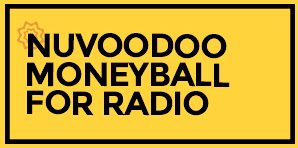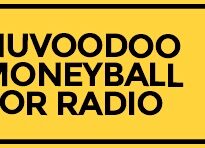Moneyball: Past Research Has Answers for Evergreen Questions


A few of the issues that came up seemed like they could be answered based on the information we’ve collected in the past. Our fearless NuVoodoo leader Carolyn Gilbert and marketing guru Mike O’Connor helped craft answers to a few evergreen questions.
Q: Do radio station contests get listeners to listen longer? A: They hate admitting they can be bought, but the numbers say they can. Money and prizes always top the list of reasons people give about why they would empanel as ratings respondents. Well-executed contests consistently punch above their weight in helping to build AQH. We spend time in our studies looking at the best prizes and the best contest mechanisms. We encourage stations that have the opportunity in a music test or perceptual study to get local opinions on these matters. While $1000 cash is a great prize according to our national samples, we’ve seen local markets where audiences for specific stations have interest in smaller prizes. It all depends on specific market conditions. Knowing the answer can give your contests tremendous impact against a smaller budget.
Q: Do listeners change the station when a song ends and a person starts talking? A: Many say they do — and surely most do at some time or another. It’s up to us to make sure that when “a person starts talking” they’re saying something interesting. Monitor your station and keep tabs on how often your hosts have to talk about the station versus how often they get to talk about the lives of the listeners. As Dale Carnegie said, “To be interesting, be interested.” If you want people to be interested in you, start by being interested in them.
Q: Do many listeners want to wear a shirt, ballcap, etc. with a radio station logo? A: We’re looking forward to getting an answer to this question in RPS 24. These days your station website can have this type of swag for sale on demand at no direct cost to your station beyond the creation of the design to be imprinted. (We’re sure about this because we offer an online merch store solution called PowerAMP.) Many stations tilt the odds in their favor with special t-shirts that commemorate an event or something unique to your market.
Q: Is it important to listeners that a radio personality is local? A: It’s not important to most listeners at all. Except for the news broadcasts, most of the programming on local TV stations is network or syndicated. The advantage of a local radio personality is that, by being part of the local community, they have a leg up in saying something that will connect with listeners. If the station works hard to get their hosts out in the community, those hosts can connect with listeners in person. Doing that elevates these on-air voices into real, relatable people.
Q: How much talk do listeners want in the morning? What about in the late afternoon? A: We’d asked questions like this in the pre-DSP, pre-podcast days and we’d find that there’s a slightly higher tolerance (or expectation) that there’ll be more talk on radio in the morning. The truth is, however, that there’s never been any tolerance for blathering — PPM has laid that fact bare. If the talk isn’t entertaining, they don’t want any of it. If the talk is riveting, they want all of it. It’s all about entertainment.
You likely have data showing what percentage of your audience will enjoy hearing each of the songs you might play. Talk from the hosts is another matter entirely. Do your hosts need to mention the name of your station? Certainly, listeners need to know the station name, but if you’re in a PPM market your station name doesn’t factor into getting credit for listening in the ratings. Your talent is free to start a break with the most interesting thing they could say at that moment.
Second to second, stations play a high stakes version of the old “beat the bomb” contest. The longer the break goes on, the more likely “the bomb” will go off and listeners tune out.
- Service elements are often appreciated by listeners and generally get a pass.
- Station promotional elements are tough — ask yourself if they’re really entertaining or interesting (sometimes a one-to-one explanation from the talent conveys a promotional idea better than a cinematic promo).
- Station imaging runs the gamut. At one end is imaging that is genuinely entertaining and engages listeners while reinforcing the station’s brand. At the other end is imaging that sounds like it was created 30+ years ago (and that most listeners don’t even hear any longer).
- Other content? It all depends on whether it’s interesting or entertaining to enough of the audience. Local research can help draw a roadmap here, but it’s ultimately up to the talent.
Some of the answers we’re anticipating from Ratings Prospects Study 24 cover new ground, such as listener perceptions and reactions to the use of AI voices on the air. Some of the answers will help enlighten us on how broadcast radio is faring in the new audio entertainment landscape. We’ll be sharing the results of Ratings Prospects Study 24 later in June to help radio shape programming, promotion, and marketing plans for its fall report card from Nielsen.




